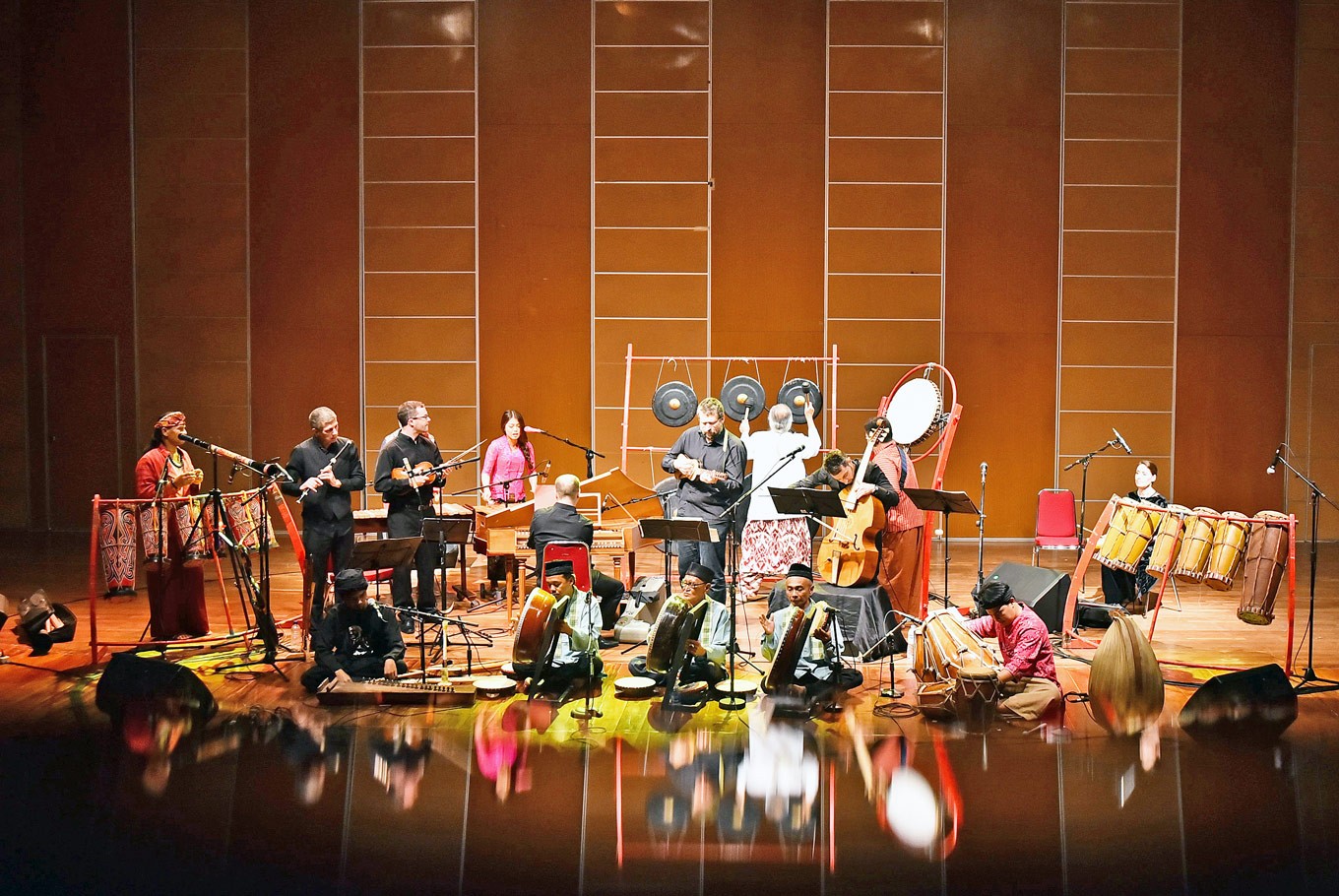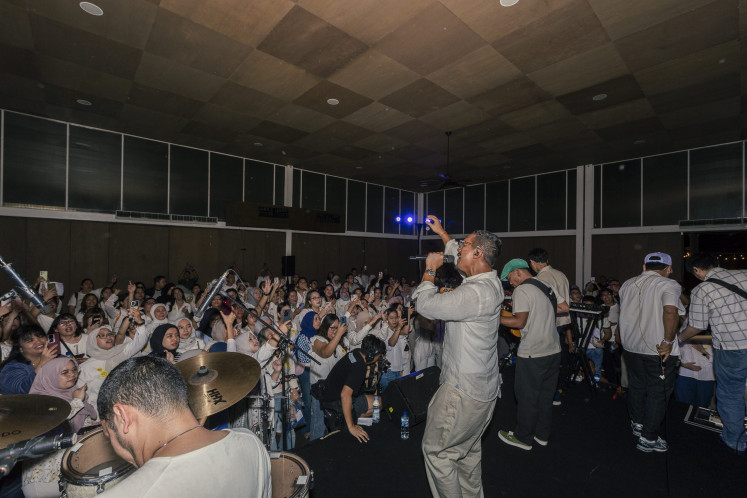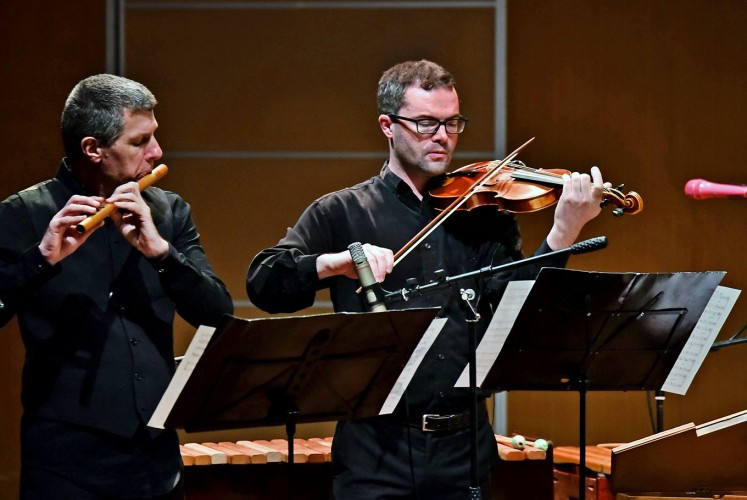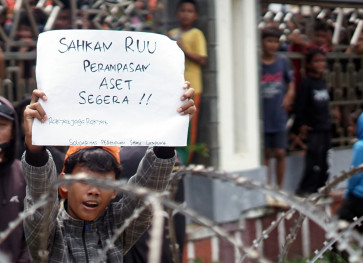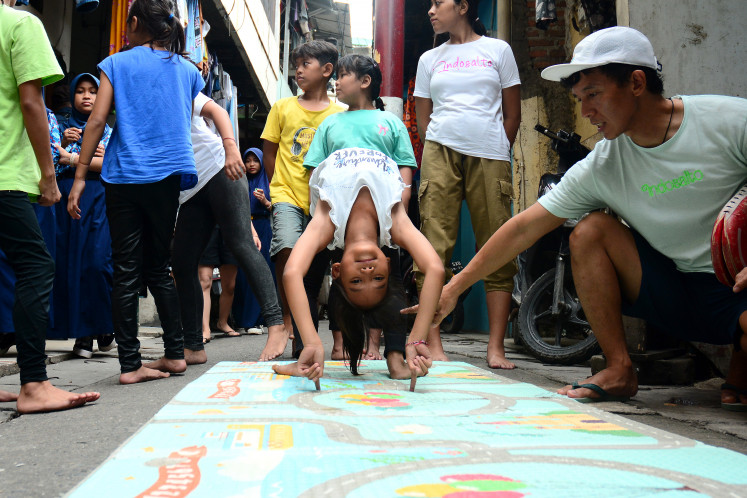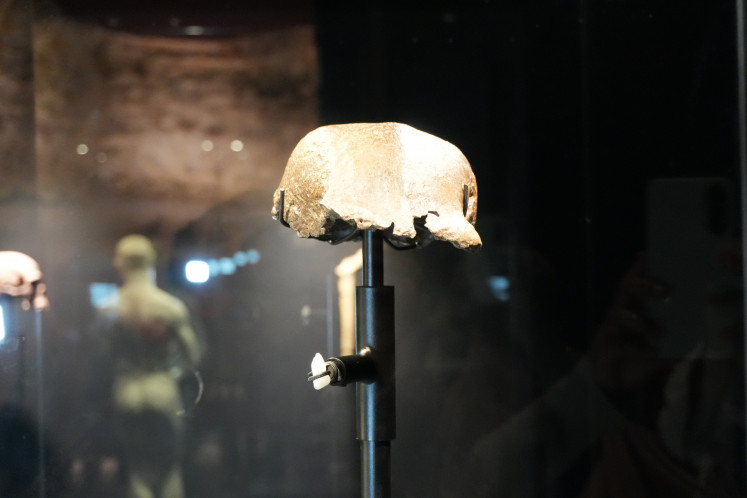Popular Reads
Top Results
Can't find what you're looking for?
View all search resultsPopular Reads
Top Results
Can't find what you're looking for?
View all search resultsLa Baroque Nomade: The travelers of music
With the language of music, even the strangest of aliens are able to communicate and understand those in faraway lands.
Change text size
Gift Premium Articles
to Anyone
T
he limits of communication are often transcended through the most universal of all languages: music. With the language of music, even the strangest of aliens are able to communicate and understand those in faraway lands.
During the Dutch colonial era in Indonesia, the colonizing Europeans found this fact to be true. In celebration of this kind of connection in that era, a meeting between performers of Europe’s most rigid type of music, baroque music, and a contemporary traditional Indonesian composer took place in various halls across Java in early March.
Organized by the Institut Francais d’Indonesie (IFI), the La Baroque Nomade concert featured a Western baroque ensemble consisting of musicians Jean-Christophe Frisch, Remi Cassaigne, Mathieu Dupouy, Andreas Linos and Australian musicologist David Irving, collaborating with renowned Indonesian composer Franki Raden, who is best known for his film scores for Indonesian classics such as the 1986 comedy Naga Bonar.
The point of the concerts, which were performed between March 10 and March 15 at the Usmar Ismail Hall in Kuningan, South Jakarta and the IFI centers in Bandung, Yogyakarta and Surabaya, was to bring together Western baroque music and traditional Indonesian music, as was done back in the 16thto 17th century colonial times.
The concerts featured Western music that is “300 to 400 years old” along with the integration of traditional Indonesian music styles, hence the title “La Baroque Nomade”, symbolizing the nomadic character of the music being created.
One of Franki Raden’s compositions of the night, “Homage to the Ancestors” was a stunning mix of traditional Indonesian instruments fused with the baroque music led by Jean. His second piece “Voice of Diversity” mainly showcased the diverse instruments and sounds of various Indonesian cultures.
Resonating taps of various gendangs (drums) served as a welcome beat accompanying the rigid but true, beatless baroque ensemble, while strums of zithers and gentle picks of the petal-shaped Sasando of East Nusa Tenggara fought side-by-side with the lute and harpsichord for a place in the melody.
Probably the defining instrument of baroque Europe, the harpsichord, dominated most of the baroque ensemble’s set, reverberating throughout the hall with a sound that evokes the old aristocratic European class. It was one of the signature instruments of two legendary Baroque composers, Josef Haydn and Wolfgang Amadeus Mozart, both of whom have written legendary pieces for the instrument, mainly for the courts of kings.
Sways and blows: Jean-Christophe Frisch (left) and musicologist David Irving perform at Usmar Ismail Theater in Jakarta. (Institut Francais d’Indonesie (IFI)/Ndaru Wicaksono)It was truly a sonic meeting of ancient Indonesia and ancient Europe. A combination that has rarely been tried, but can work if the right minds are put to it. “The Sweet Mermaid”, an old folk song, was part of the baroque ensemble’s repertoire.
When it was time for Franki’s composition to roll out, the singular baroque music played beforehand in the first act felt distant and powerless compared to the results of cultural collaboration. All of the traditional Indonesian instruments were purposefully diversified by Frankie, as he wanted to utilize instruments from various Indonesian cultures.
This kind of cultural collaboration has its roots in both Indonesian and European history, explains Jean. During the Dutch occupation of the mid-16thto 17th centuries, the Dutch brought baroque music to their colony of the East Indies and were surprised to see Indonesian traditional instrument players later being able to play baroque music fused with their own traditional sounds.
The Dutch were reportedly struck by the musical talent of the Javanese musicians in Batavia and their ability to play Western baroque music, and sought to showcase their talents in a public setting. Even if it meant enslaving the musicians.
“So much so that while many of the Indonesian instrument players were gathered as slaves to play the music, the Dutch brought the baroque-Indonesian orchestra on tour to many places overseas, including as far as China and Japan. It was the first time Dutch baroque music was taken to a wider audience outside of the private setting because at the time, this kind of music was regarded as a private experience, rather than being showcased as a concert,” Franki explained.
All of the instruments used in the night’s concert followed the actual Javanese-Baroque repertoire of 400 years ago.
The challenge for Franki in writing his collaborative piece was bringing together and integrating the different structures and natures of the European instruments and the Indonesian instruments. This is because many ancient European instruments are played differently and sound differently to their contemporary counterparts. For example, the guitar might be slightly easier to integrate than the lute.
Back in the early colonial times, music and sound was considered one of the best ways to communicate with different cultures due to the fact that travelers would land on a faraway land realizing that they cannot communicate linguistically with the people there, akin to “aliens travelling to other planets”. But one thing that was able to transcend these barriers was sound.
Therefore, both Jean and Franki both agreed that the concert itself was an example of two seemingly “alien” worlds being able to meld together and understand each other.
“We’re talking about music here. Music is only sound and sound can be united if you find a way. We can work together with sound no matter where we come from, like one common language. That’s the magic of it,” he said.

